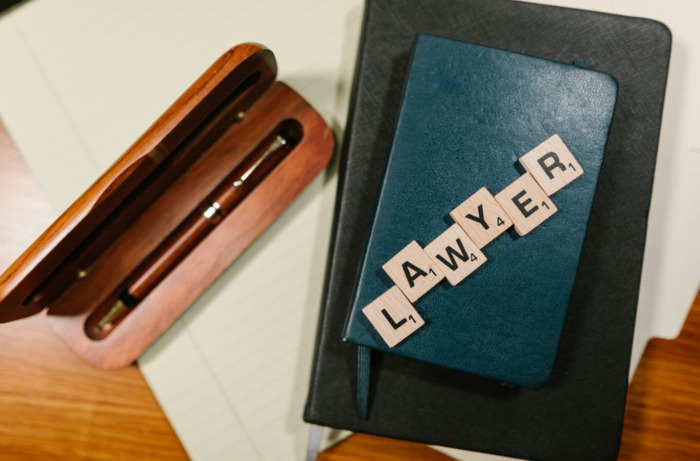In the heart of every home, the kitchen stands as a hub of culinary creativity and family togetherness. Yet, beneath the gleaming countertops and the aromatic concoctions, a hidden world of potential danger looms – the world of kitchen product liability lawsuits.
As we dive into this high-risk arena, we uncover the dramatic stories, legal intricacies, and industry challenges that revolve around kitchen products. From scalding coffee to contaminated cookware, the kitchen is a hotspot for product-related injuries, leading to multi-million-dollar lawsuits.
In this article, we will dive into the complexities of kitchen product liability, from infamous cases to regulatory standards and consumer safety measures.
The Prevalence of Kitchen Product Liability Claims
The kitchen, a place of nourishment and creativity, can also be a breeding ground for accidents waiting to happen. In fact, kitchen product liability claims are more common than you might think. From slip-and-fall incidents due to poorly designed flooring to injuries caused by faulty appliances or sharp utensils, the spectrum of potential hazards is vast.
Each year, countless individuals are injured, sometimes severely, while using seemingly innocuous kitchen products. According to the Beaumont Emergency Hospital, kitchen fires claim 480 lives, while kitchen knives lead to 350,000 injuries annually. Manufacturers, retailers, and homeowners are all affected by these claims, making kitchen product liability a pervasive concern in today’s world.
Hot Coffee and the Infamous McDonald’s Case
The American Museum of Tort Law highlights the notorious McDonald’s hot coffee lawsuit as a landmark product liability case. In 1992, Stella Liebeck suffered third-degree burns from scalding coffee purchased from a McDonald’s drive-thru. This seemingly innocuous incident led to a legal battle that resulted in a $2.9 million settlement.
While critics argued that the lawsuit was frivolous, it served as a wake-up call for the fast-food industries to reevaluate their safety protocols. The case also highlighted the importance of warning labels and temperature regulations in the world of kitchen product liability.
Teflon, Chemicals, and Class-Action Lawsuits
Non-stick cookware, cherished for its convenience, has had its fair share of controversies. Teflon, the chemical coating that makes these pans non-stick, has been linked to health concerns.
According to Healthline, Teflon coatings begin to degrade at temperatures exceeding 570°F (300°C). They emit harmful vapors into the atmosphere. Polymer fume fever is an acute flu-like illness caused by these vapors.
This has led to a series of lawsuits, with consumers alleging that Teflon-coated cookware poses health risks due to toxic fumes released when overheated. These cases have brought the spotlight to product safety standards and the need for transparency in the kitchenware industry.
Food Processors and Recalls
The kitchen is not only a hotspot for physical injuries but also a battleground against foodborne illnesses and product contamination. Food processors and appliances used to chop, blend, and process ingredients are no exception.
Over the years, various models have been involved in recalls due to defects that could lead to contamination. Such recalls not only impact the manufacturers but also raise concerns about food safety and the potential consequences of tainted ingredients. This underscores the need for stringent quality control measures in the kitchen appliance industry.
Pressure Cooker Perils and Lawsuits
In the world of kitchen product safety, one question that often arises is, “Can a pressure cooker explode?” The answer is yes; a pressure cooker can potentially explode if not used correctly or if it has manufacturing defects.
Pressure cookers are designed to cook food quickly by trapping steam inside a sealed container. When used according to the manufacturer’s instructions, they are generally safe. However, if the pressure release valve malfunctions or if the cooker is not properly maintained, pressure can build up to dangerous levels. This can lead to an explosive release of steam and hot contents.
According to TorHoerman Law, instances of pressure cooker explosions have resulted in injuries and product recalls. This further highlights the importance of understanding the safe usage of these kitchen appliances. It’s a sobering reminder that even seemingly benign kitchen products can pose serious safety risks if not handled with care.
Regulatory Oversight and Kitchen Product Standards
Regulatory oversight plays a vital role in ensuring the safety of kitchen products. Government agencies like the U.S. Consumer Product Safety Commission (CPSC) set guidelines and standards to protect consumers from dangerous products.
These standards cover everything from electrical safety in appliances to labeling requirements for cookware. However, challenges persist as regulatory bodies must adapt to evolving technologies and changing consumer preferences. This highlights the ongoing need for stringent and up-to-date safety measures in the kitchenware industry.
The Anatomy of Kitchen Product Liability Lawsuits
The legal battles that ensue in kitchen product liability cases are complex, involving several key players. Plaintiffs, the injured parties, seek justice and compensation, while defendants, typically manufacturers or retailers, defend their products and reputations.
These lawsuits follow a rigorous legal process, including discovery, depositions, and potential settlements. The outcomes can have far-reaching consequences, from altering industry practices to setting legal precedents. As a result, these cases serve as a testing ground for legal methods and solutions that affect both parties and the larger market.
Navigating the Kitchen Product Jungle
In the face of potential hazards and legal complexities, consumers need to be vigilant and proactive when it comes to kitchen product safety. When purchasing kitchen appliances, cookware, and utensils, it’s essential to research products thoroughly, read user reviews, and inspect safety certifications.
Furthermore, understanding the warranty and return policies of the manufacturer or retailer can provide an added layer of protection. Being informed and cautious is the best defense against the unexpected dangers lurking in the world of kitchen product liability lawsuits.
Final Thoughts
Kitchen product liability lawsuits shed light on the pervasive risks that exist in our culinary spaces. From scalding coffee incidents to Teflon-related health concerns and pressure cooker mishaps, the kitchen proves to be a breeding ground for potential harm.
These cases emphasize the need for rigorous safety standards, vigilant regulatory oversight, and consumer awareness in mitigating these hazards. Furthermore, they act as catalysts for industry enhancements and legal precedents, influencing the landscape of product safety.
As we navigate this complex world of kitchen product liability, our best defense lies in informed and cautious consumer choices. This ensures that the heart of our homes remains a place of nourishment and creativity without hidden dangers.
 Global Elix
Global Elix 

